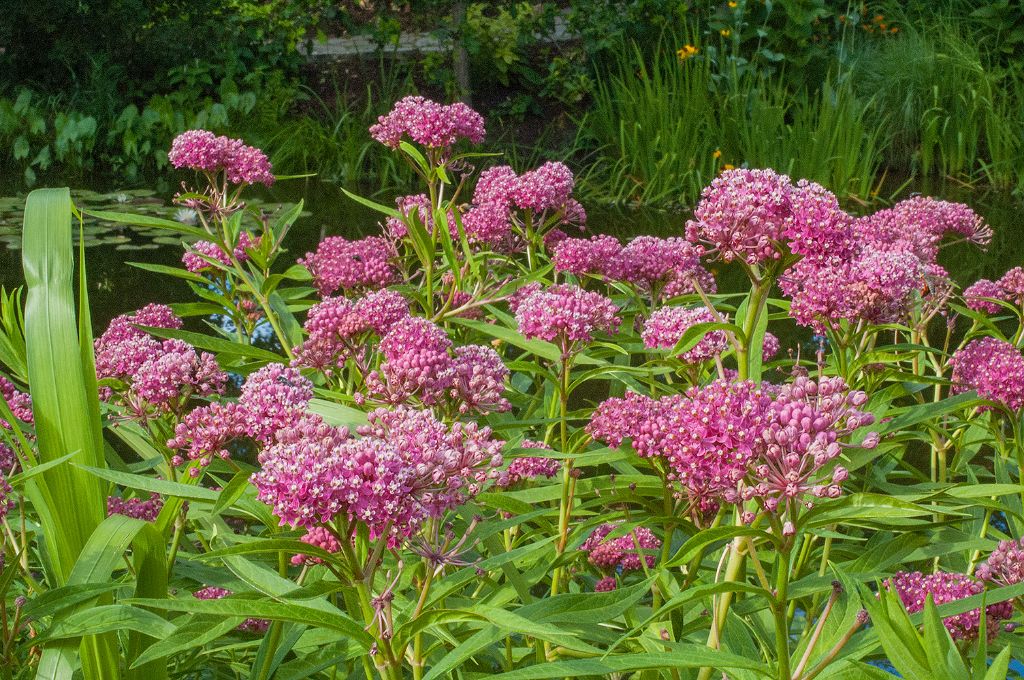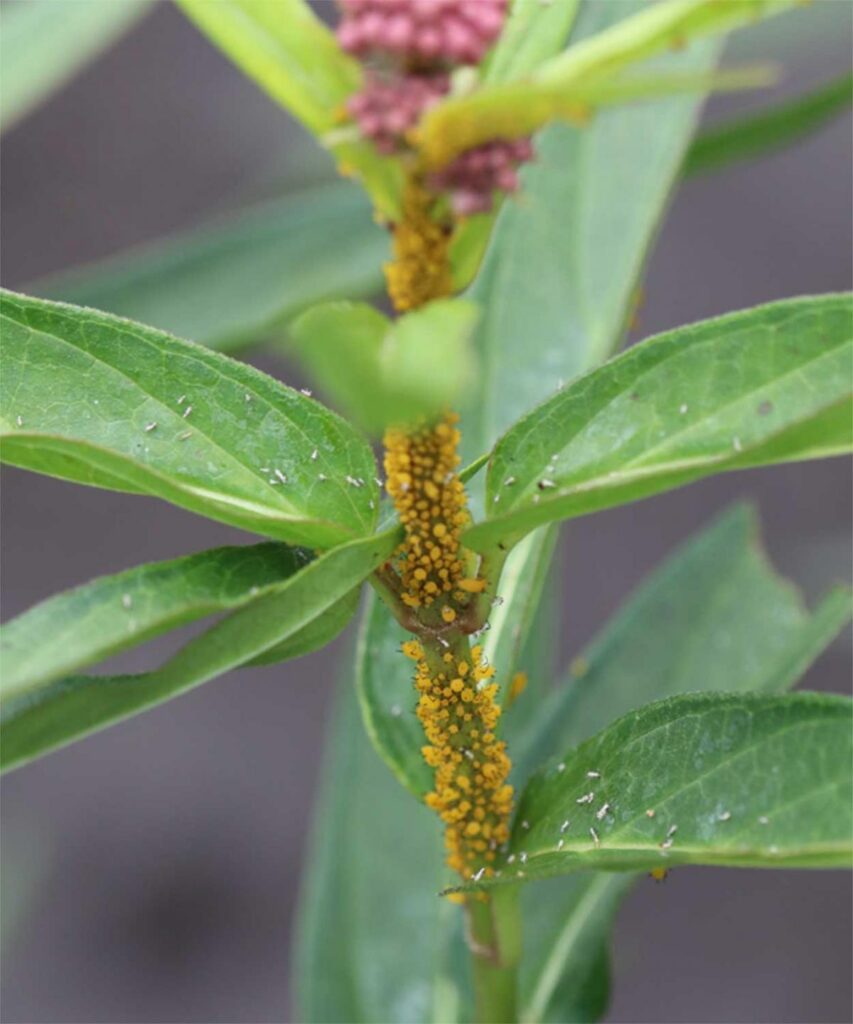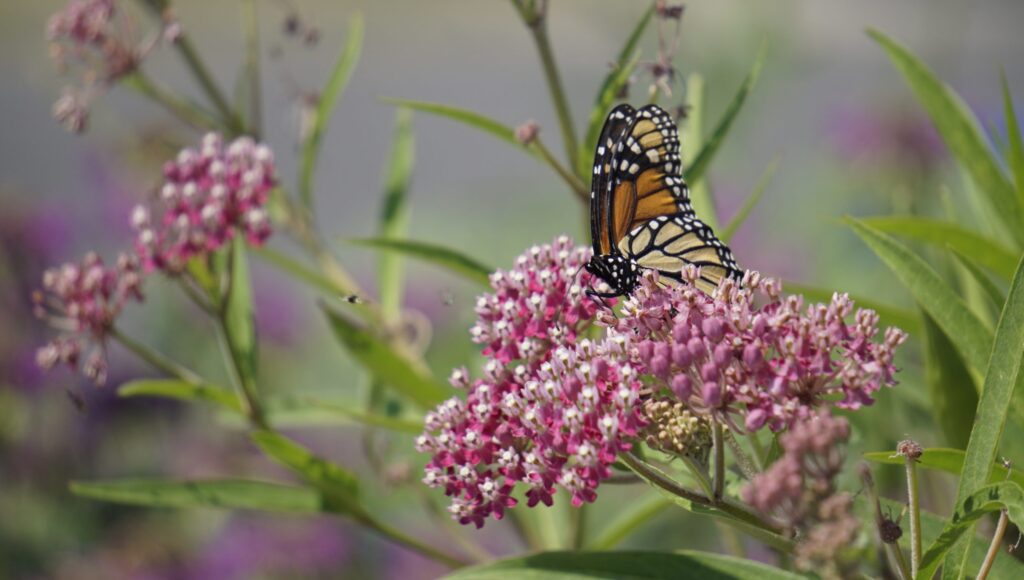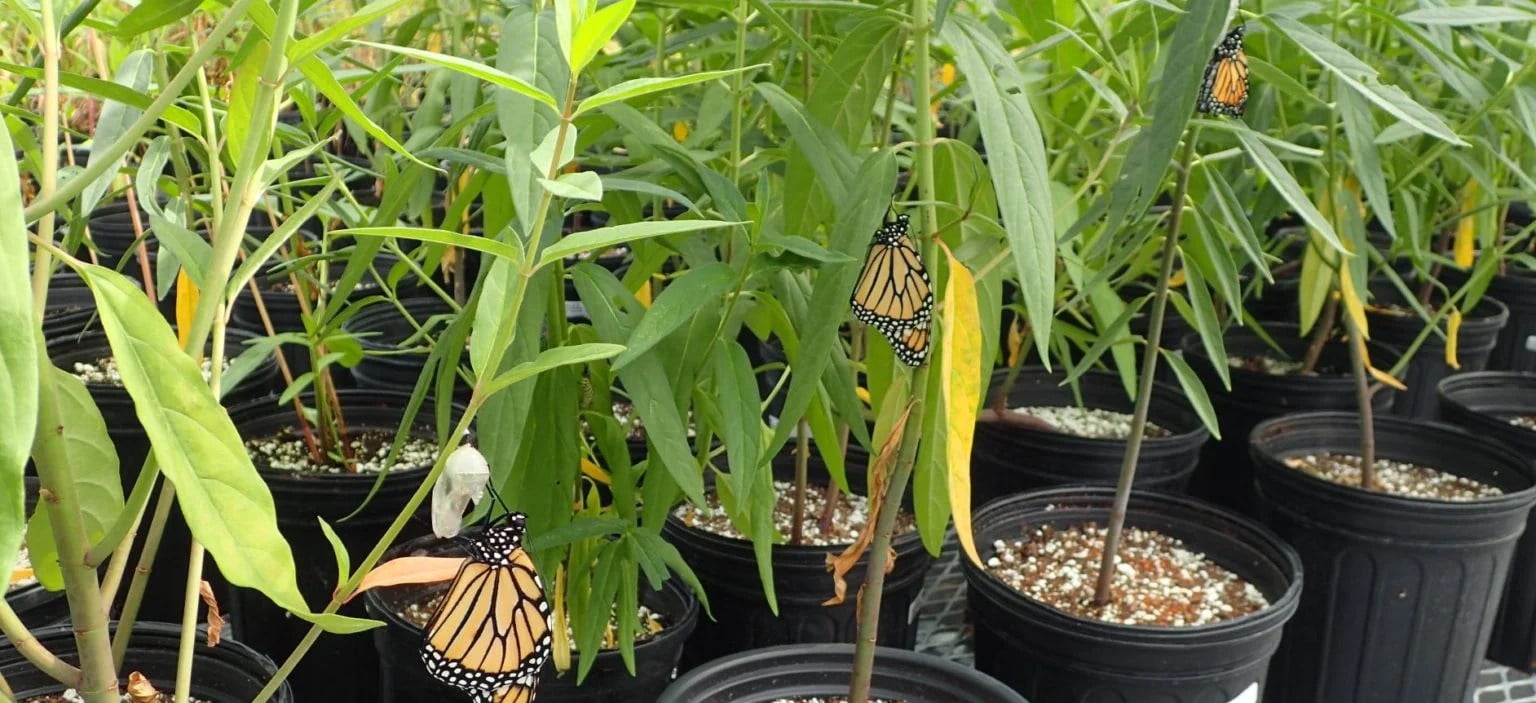4. Watering:
- Frequency: While the plant prefers moist conditions, ensure the soil isn’t waterlogged. Water when the top inch of the soil feels dry.
- Amount: Water thoroughly, ensuring even moisture throughout the soil.
5. Sunlight:
- Swamp Milkweed prefers full sun to partial shade. In the south’s intense summer heat, a bit of afternoon shade can be beneficial.

6. Fertilizing:
- Being a native plant, Swamp Milkweed isn’t particularly demanding when it comes to fertilizers. However, a balanced, slow-release fertilizer applied in spring can boost growth.
7. Pest and Disease Management:
- While Swamp Milkweed is relatively disease-resistant, watch out for aphids. A strong water spray can dislodge them.
- Remember, you might spot Monarch caterpillars munching on the leaves. That’s a good sign! Avoid using pesticides that could harm them.

8. Winter Care:
- In Florida’s mild winters, Swamp Milkweed may remain evergreen. However, if the plant dies back, trim it to the ground. It will sprout back in spring.

25 Florida-Native Swamp Milkweed Seeds (Asclepias Incarnata) for 2024 – Free Shipping
Our premium Asclepias Incarnata seeds, originating from our conservation land in Polk County Florida, provide an excellent opportunity to transform your outdoor space into a haven for the mesmerizing Milkweed Butterflies. These seeds offer an effortless way to cultivate a garden sanctuary that supports the life cycle of these delicate and fascinating creatures. These Swamp Milkweed seeds are recommended for USDA Hardiness Zone 9 and the rest of its native range. 25 seeds.
Conclusion:
Growing Swamp Milkweed in containers or raised beds in Florida is a rewarding experience, both for gardeners and the environment. As you watch this native beauty flourish, you’ll also be playing a part in supporting the local ecosystem and providing a haven for Monarch butterflies. Whether you’re an experienced gardener or just starting out, Swamp Milkweed is a worthy addition to your green space.

The Adventures of Johnny Butterflyseed – Author Signed First Edition Children’s Book
Save the monarchs!
Johnny Butterflyseed and his fairy friend, Raven Silverwing, embark on a mission to save the rapidly disappearing butterflies. They enlist the help of Queen Venus Goldwing and her kingdom of monarchs to educate and inspire kids to become butterfly farmers. At first, Johnny faces his own internal struggle with self-doubt and fear in his ability to make a difference, but then soon develops a mindset that allows him to not only get started, but also make progress one day at a time. Through challenge after challenge, Johnny learns that he is not alone in his mission and that there are many people who want to help. Together, Johnny, Raven, and Queen Venus educate thousands of children on becoming butterfly farmers.
